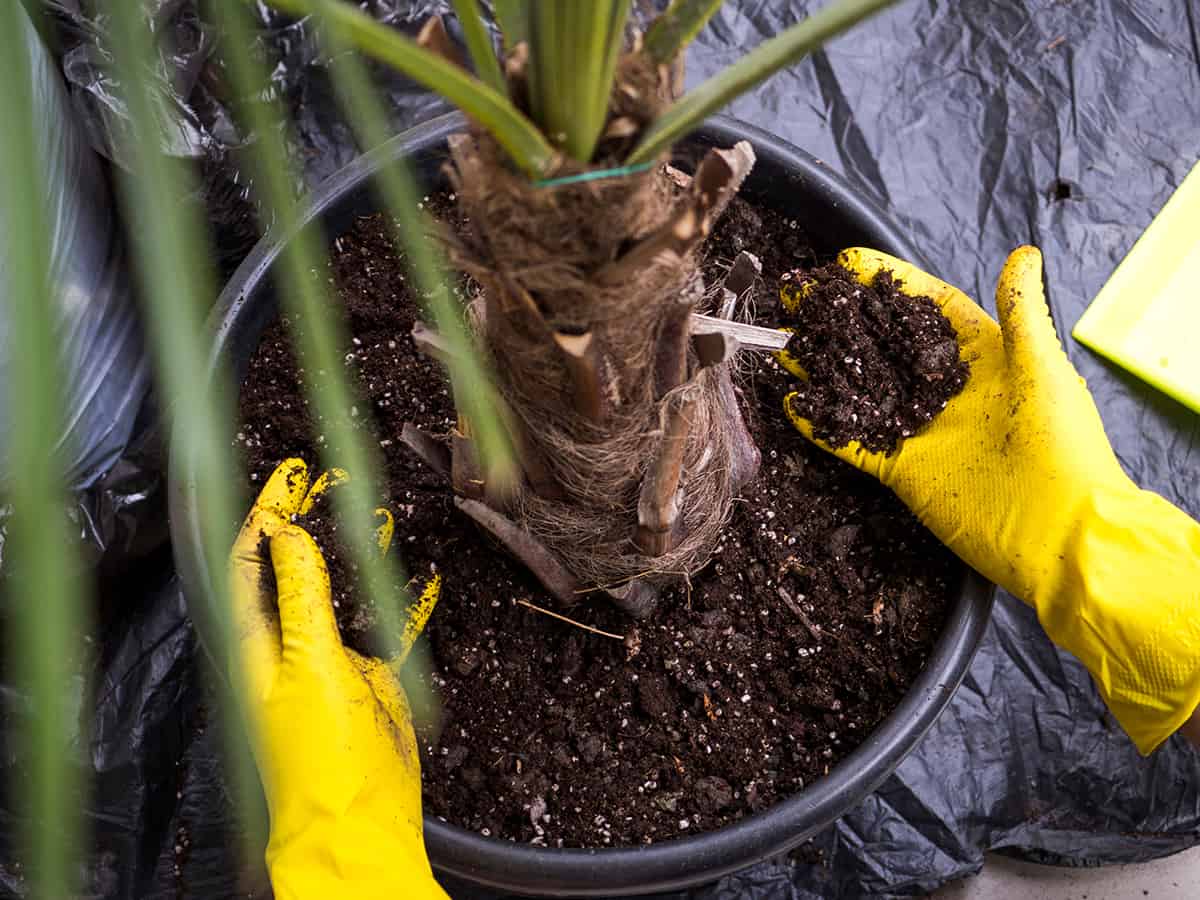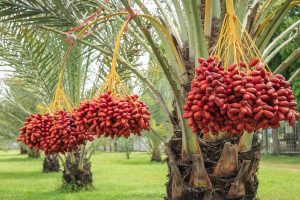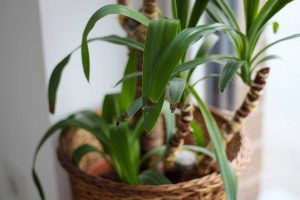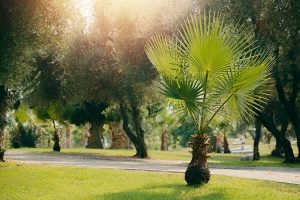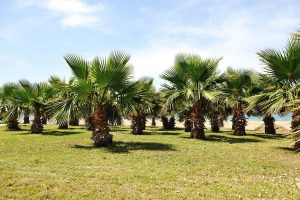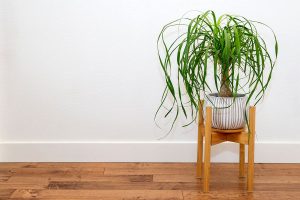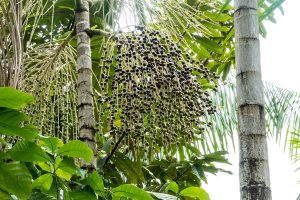If you’re looking for the right potting for your palm trees, this is the guide you need. We’ll cover in detail what you should look for in the soil and which types of soil work best for palm trees.
Table of Contents
What Qualities Should Palm Tree Soil Have?
There are over 2600 species of palm trees, and within these species, many more varieties exist. Because of this vast range of species, there can be huge differences between the types of care that different palms need.
Drainage and moisture retention
Palm trees which hail from rainforests and wet climates, are accustomed to growing in consistently moist soil. This means that they need relatively good drainage from their soil, but since they are thirsty plants, they also need soil that will hold a lot of moisture against the roots instead of directing it away from the roots too quickly.
Palm trees from arid climates will need to be grown in soil that is not quite so moisture-retentive.
Stability
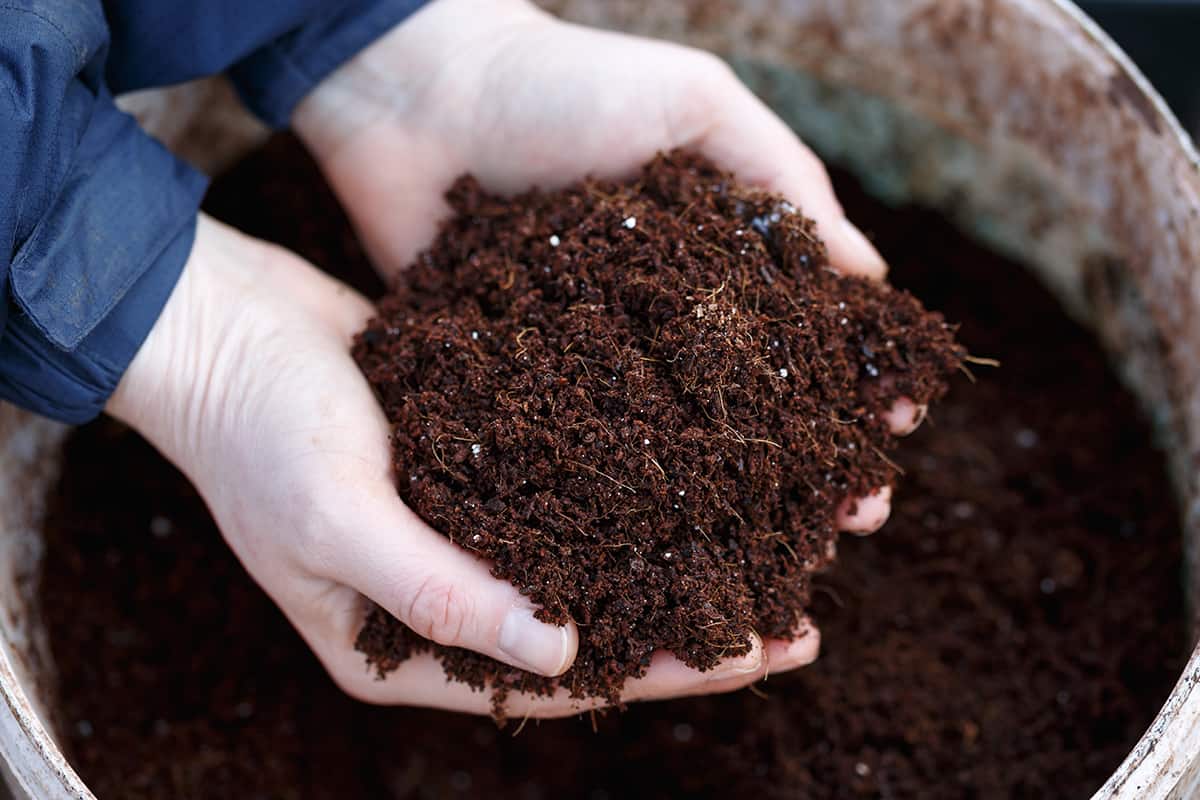
The soil a palm tree grows in needs to offer stability so that the palm roots can anchor to the soil, ensuring it doesn’t fall over in a storm or become uprooted and separate from the soil.
This is important for all plants and trees, but especially so for palm trees because they tend to have tall and slender trunks which can make them vulnerable to high winds. They also lack a taproot that can anchor them more safely within the soil. Sand is a good addition to palm tree potting soil because the fibrous roots bind themselves to sand, creating a solid grip.
Aeration
Palm tree roots need to be grown in soil with good aeration so that they can remain healthy and absorb optimum moisture and nutrients.
Since there are so many different varieties of palms and different care guidelines for different species, it makes sense that there would be no one type of soil that is ideal for all palms. Instead, customize your soil to the species of palm you are growing so that it has the necessary qualities to help the tree thrive.
Best Soil for Potted Palm Trees
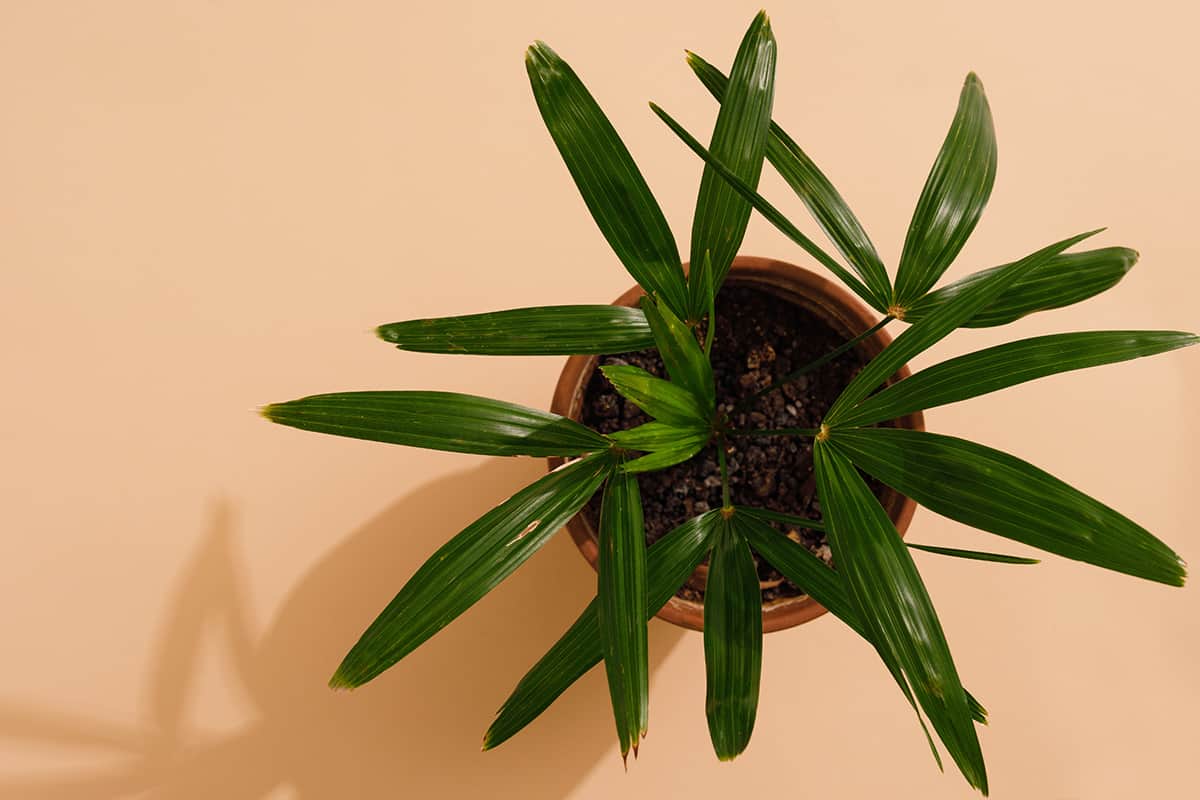
Potted palm trees need a different type of soil than palm trees that are planted directly in the ground. This is because palm trees which are restricted to their pots, cannot extend their roots very far to seek out additional moisture or nutrients.
As a result, potting mix for palm trees grown in pots needs to be of a good standard because it is the only soil the palms can access. It will need to be better at retaining moisture compared with the soil used for growing palm trees in the ground, and it will also need to have good nutrient retention to reduce the need for fertilizer.
Best Soil for Palm Trees on Ground
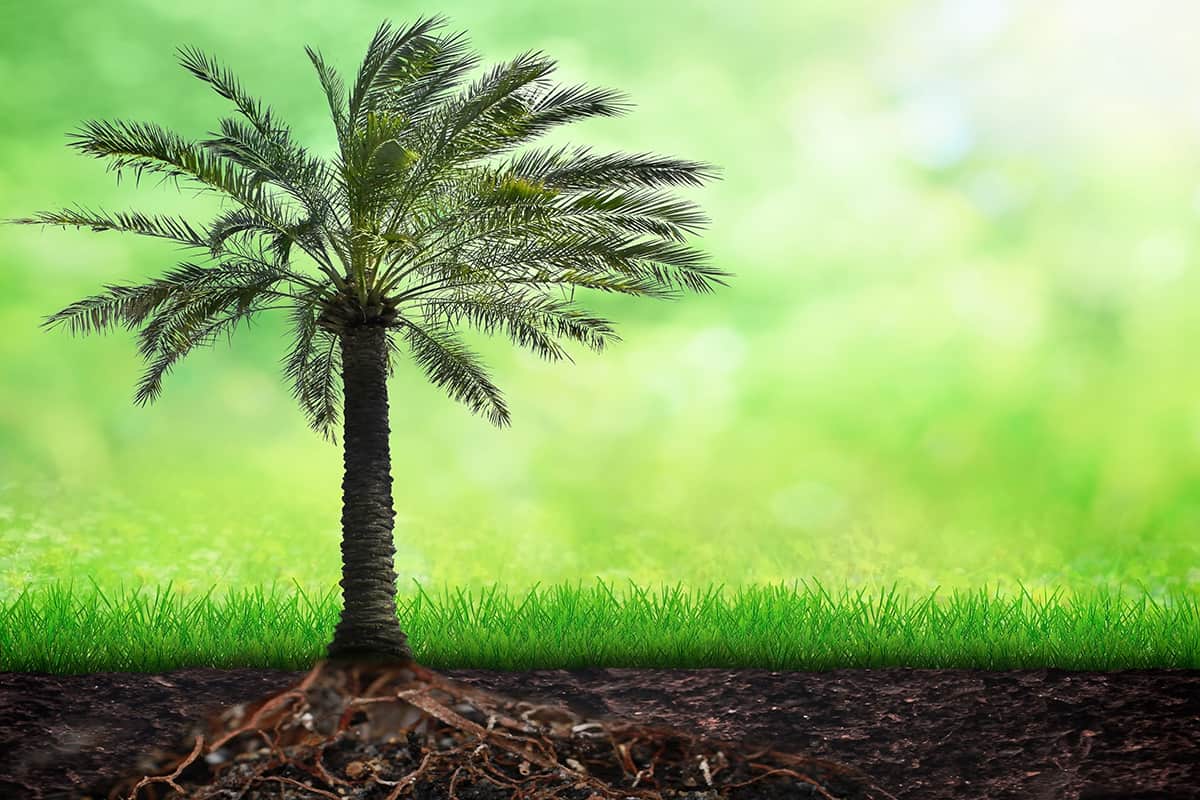
While some palm tree growers recommend altering the ground soil to suit the needs of the palm tree, there are others who recommend against this. A study by Washington State University concluded that amending ground soil offers no distinct benefits to the growth of the palm and could actually pose more problems for the plant in the long term. This is because the roots will remain within the amended area rather than spreading out and getting used to the native soil.
However, amending the soil can be useful when first transplanting palm trees because it helps the palm adjust more slowly to its new soil rather than shocking it, which can be detrimental to the palm’s health.
If you have sandy, loamy soil in your local area, then this will be ideal for growing most types of palms, but if the soil lacks a sand content, then it is a good idea to blend some sand into it.
Optimum pH for Palm Tree Soil
Palm trees grow best in soils that are neutral or slightly acidic. Alkaline soils can cause discoloration in the foliage of palms and lead to a deficiency of nutrients, so the pH needs to be below between 5 and 7, ideally at around 6.2 to 6.5. This is a pH level that is appropriate for all palms, but it works especially well for tropical palm trees.
If you find that your soil is too alkaline, there are additions you can work into the soil, which will lower the pH and create more acidity. These include organic compost, leaf mold, or mulch made from pine needles. You can also buy acidic feeds which contain lemon juice or vinegar to help make an alkaline soil more acidic.
In some cases, it may be that your soil is too acidic, which can be the natural state of your local soil, or this could happen when creating your own potting soil if the mix has a lot of acidic components.
Good potting soil for palm trees will contain a reasonable amount of humus, bark, and peat moss, and these materials do tend to result in a heavily acidic pH. To increase the pH of soil that is too acidic, the dolomite powder works well. Crush up dolomite rocks and work them evenly into your potting soil.
Buying Potting Soil for Palm Trees
If you can get hold of a specially formulated potting soil mix for palm trees, then this is an easy solution for choosing a substrate. Unfortunately, palm soil mixes are not widely available, since they contain a large proportion of sand which makes the bags they are sold in very heavy, and therefore inconvenient for stores to stock and sell.
All-purpose potting soil is not ideal for growing palms because it is typically too light. It will not be heavy enough for the fine root strands of palms to grip to, and it will not hold enough moisture close to the roots. If you do buy pre-made potting soil for your palms, you can mix it with extra materials to make it more suitable.
How to Make Your Own Palm Tree Potting Soil
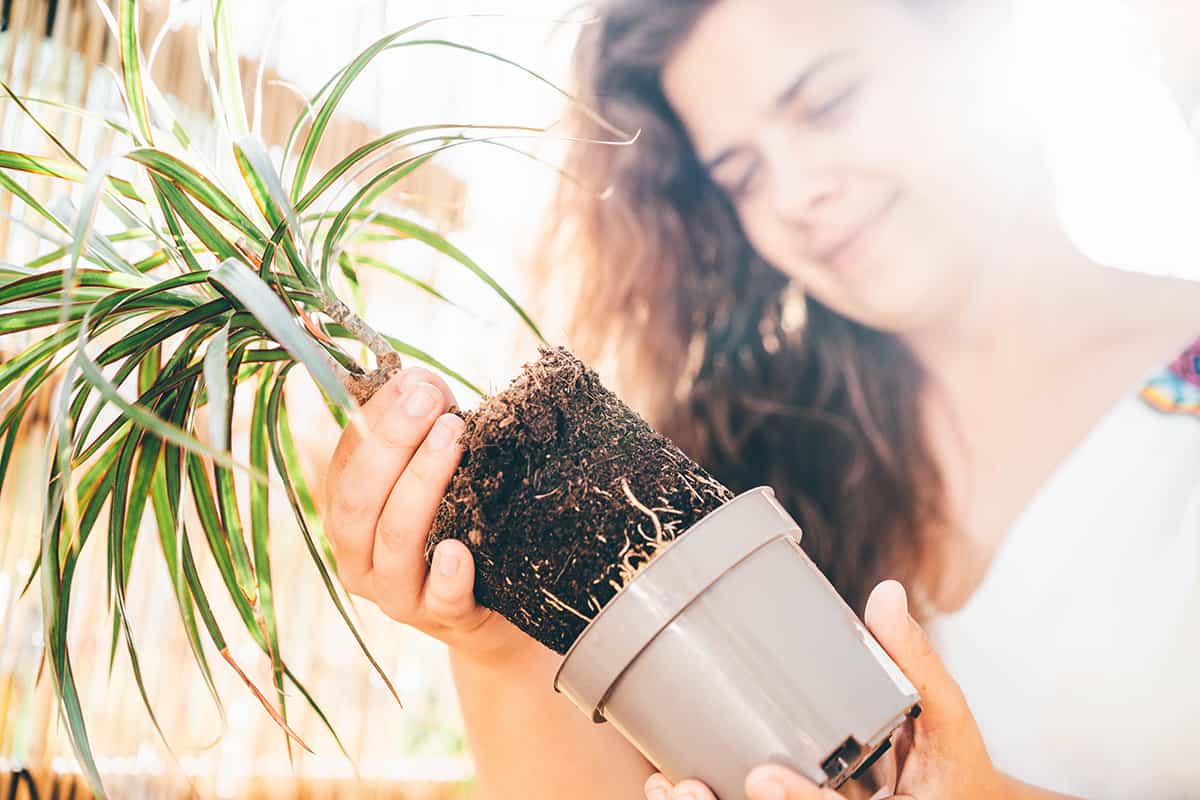
There are several ways to make your own potting soil mix for palm trees, and the ingredients you use will depend on local availability, as well as the type of palm species you have.
Using pre-mixed soil
The easiest way to prepare potting soil for your palms is by using a pre-mixed all-purpose potting soil bought from a store and adding your own extra components. This will usually work out as more cost-effective than creating your own potting soil from scratch since you won’t need to purchase as many different elements. However, the resulting soil won’t be as well customized specifically to palm trees.
Start with an all-purpose potting soil for houseplants or outdoor potted palms. This will usually have a light consistency which drains too well, so to help the soil retain more moisture, you should add sand, as well as topsoil. The percentage of sand which should make up your potting soil will depend on the species of palm you are growing.
If the palm is a tropical species that hails from wet climates, then a higher proportion of sand is best. In this instance, a mix of 40% sand, 40% potting soil mix, and 20% topsoil will work well. For palms that are native to more arid climates, reduce the proportion of sand and increase the proportion of potting soil mix and topsoil.
You can also add extras if you have them available, which will help improve the texture of the soil. These can include wood chips or bark, perlite, pumice stone powder, and shredded organic materials like leaf mulch or fir shavings.
Starting from scratch
Creating your own potting soil for palm trees from scratch will give your palms the best possible substrate to grow in, and this is certainly worth the extra hassle if you’re growing a lot of palms.
There are many different formulas for making palm tree soil from scratch, and you can experiment with your ingredients and proportions to see what works for you. You will also have to adjust your watering schedule based on your soil mix; for example, if the soil dries out more quickly than you were hoping, you will need to water more frequently.
Basic Palm Soil Mix:
- 20% perlite
- 20% peat moss
- 15% sand
- 5% high-quality topsoil
- 5% humus soil
- 15% pumice
- 10% redwood shavings
- 10% pine bark
How to Repot Palm Trees
Palm trees, especially when they are young, are prone to root shock. This happens when a palm tree is transplanted or repotted and is distressed by the sudden change in the soil. The best way to prevent this from happening is to repot a palm tree using as much of the previous soil remaining on the roots as possible.
Do not try to remove the old soil from the roots when repotting since the presence of a substrate the palm is accustomed to will help it to settle in better in the new soil. A good balance of the old soil and fresh potting soil will help the palm avoid root shock while also providing it with fresh nutrients and a good moisture retentive texture for optimum growth.
